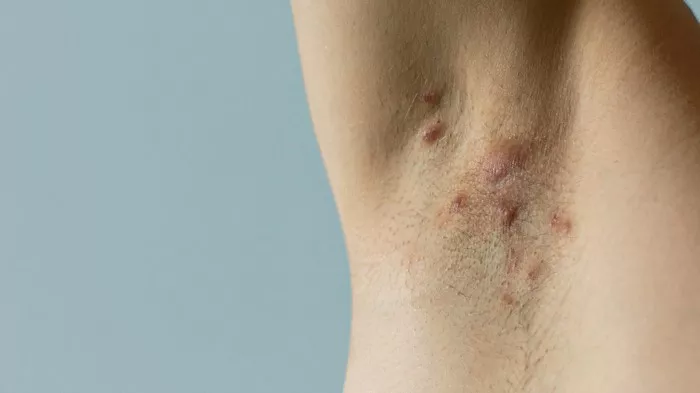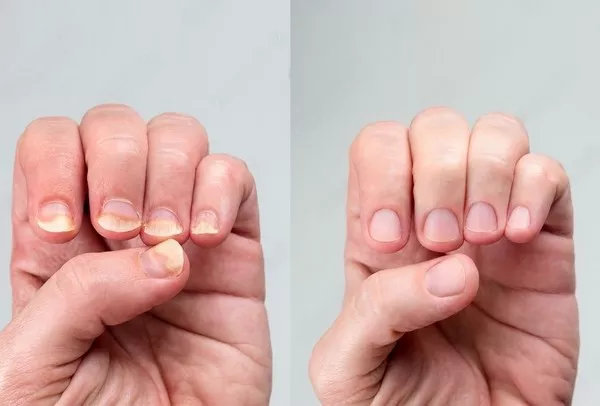Hidradenitis suppurativa (HS) is a chronic inflammatory skin condition characterized by painful, recurrent nodules and abscesses. It primarily affects areas rich in apocrine glands, such as the armpits, groin, and buttocks. The condition can significantly impact quality of life due to pain, scarring, and recurrent flare-ups. In this comprehensive article, we will delve into the nature of hidradenitis suppurativa as a chronic disease, its symptoms, diagnosis, treatment options, and the ongoing management required for those living with this condition.
Understanding Hidradenitis Suppurativa
What is Hidradenitis Suppurativa?
Hidradenitis suppurativa, also known as acne inversa, is a chronic inflammatory skin disease characterized by recurrent painful nodules, abscesses, and sinus tracts. It primarily affects areas of the body where skin rubs together, such as the armpits, groin, buttocks, and under the breasts. The exact cause of HS is not fully understood but is believed to involve a combination of genetic predisposition, immune dysfunction, and factors related to hair follicles and sweat glands.
Symptoms of Hidradenitis Suppurativa
The symptoms of HS can vary widely among individuals but commonly include:
- Painful nodules: Firm, painful lumps under the skin that may enlarge and become inflamed.
- Abscesses: Pus-filled lesions that can rupture and drain foul-smelling fluid.
- Tunnels and tracts: Channels under the skin (sinus tracts) that connect the abscesses, leading to the formation of interconnected pockets.
- Scarring: Thickened, scarred skin in affected areas due to recurrent inflammation and healing.
The severity of symptoms can fluctuate over time, with periods of flare-ups and remission.
Is Hidradenitis Suppurativa a Chronic Disease?
Definition of Chronic Disease
A chronic disease is defined as a long-lasting condition that can be controlled but not cured. It typically requires ongoing management and may cause persistent health issues or limitations. Hidradenitis suppurativa meets these criteria due to its recurrent nature and the chronic inflammation and scarring it causes.
Chronic Nature of Hidradenitis Suppurativa
Hidradenitis suppurativa is considered a chronic disease because:
Long-lasting nature: HS tends to persist over many years, often with periods of exacerbations (flare-ups) and remissions.
Recurrent symptoms: The condition is characterized by recurrent painful nodules, abscesses, and sinus tracts that may require repeated treatments.
Impact on quality of life: HS can significantly impact quality of life due to chronic pain, discomfort, and psychological effects associated with visible skin lesions and scarring.
Diagnosis of Hidradenitis Suppurativa
Diagnosing HS can be challenging and often involves:
- Clinical examination: A healthcare provider will evaluate the affected areas and inquire about symptoms.
- Medical history: Inquiring about family history of HS or similar skin conditions.
- Imaging: In some cases, imaging tests such as ultrasound may be used to assess the extent of involvement or presence of sinus tracts.
Treatment Options for Hidradenitis Suppurativa
The management of HS aims to alleviate symptoms, reduce inflammation, prevent complications, and improve quality of life. Treatment options may include:
- Topical Treatments: Antibacterial washes, topical antibiotics, or corticosteroids to reduce inflammation and prevent infection.
- Systemic Medications: Oral antibiotics (such as tetracyclines), retinoids, or immune-modulating medications (biologics) to suppress inflammation.
- Surgical Interventions: Drainage of abscesses, excision of affected tissue, or laser therapy for severe or persistent cases.
- Lifestyle Modifications: Maintaining good hygiene, avoiding tight clothing, and weight management to reduce friction and sweating.
Prognosis and Outlook
The prognosis of HS varies among individuals and depends on factors such as the severity of symptoms, response to treatment, and presence of complications. While HS is chronic and may require long-term management, many individuals can achieve symptom control and improved quality of life with appropriate treatment and lifestyle modifications.
Challenges and Considerations
Managing HS can present several challenges, including:
- Chronic pain: Persistent pain and discomfort associated with nodules and abscesses.
- Psychosocial impact: Emotional and psychological effects due to visible skin lesions, scarring, and chronic nature of the disease.
- Treatment adherence: Compliance with long-term treatment regimens and lifestyle modifications.
Holistic Approach to Management
Effective management of HS often requires a multidisciplinary approach involving dermatologists, primary care providers, and sometimes surgeons or mental health professionals. Tailored treatment plans should address individual needs and goals while minimizing symptoms and improving overall well-being.
Conclusion
In conclusion, hidradenitis suppurativa is indeed classified as a chronic disease due to its persistent nature, recurrent symptoms, and impact on quality of life. While there is currently no cure for HS, ongoing research and advances in treatment options offer hope for improved symptom management and better outcomes for individuals living with this challenging condition.
By understanding the chronic nature of HS, recognizing early symptoms, seeking timely medical evaluation, and adhering to personalized treatment plans, individuals can effectively manage their symptoms, reduce complications, and enhance their overall quality of life. Continued awareness, education, and support are essential in fostering a better understanding of HS and improving outcomes for affected individuals worldwide.
Related Topics:



























